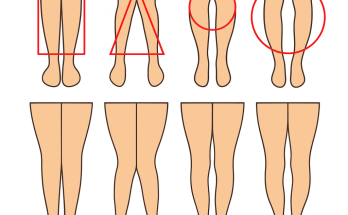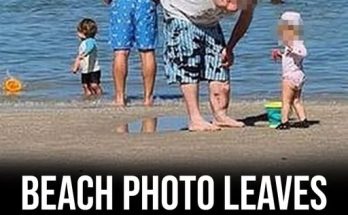
There’s singing and there’s dancing – and that’s just what Dwayne “The Rock” Johnson brings to Moana and Moana 2. Alongside his presentation of the Polynesian demigod Maui, there’s Auli’i Cravalho as Moana, Nicole Scherzinger as Sina, Moana’s mother, and a strong ensemble cast that highlights how magical Disney animated movies can be.
What’s not entirely clear is that, when you look a little further or listen a bit closer, there’s a lot of Polynesian history and myth woven into Moana and Moana 2 as well. This is especially true when it comes to Maui. The trickster, shape-shifter, and larger-than-life presence is actually at the heart of Polynesian origin stories and, no matter how many times he saves the day onscreen, Maui is, first and foremost, a mythological hero to humanity.
- Photo 1:
- Wikimedia Commons
- Photo 2:
- Walt Disney Studios
-
- Photo:
- Moana 2
Maui In The ‘Moana’ Movies Tells Tales, Shape-Shifts, And Saves The Day
As voiced by Dwayne Johnson, Maui in Moana and Moana 2 is an ornery god-like figure with tattoos, a magical hock, and an enormous presence. Maui doomed the Polynesian island of Motunui when he stole Te Fiti’s heart. Te Fiti was the goddess of nature that island residents worshiped to maintain the ocean’s vitality.
Throughout Moana, Maui reveals information about himself to the young Moana – a girl chosen by the ocean to return Te Fiti’s heart – by using his tattoos as a guide. When necessary, Maui uses his hook to perform great feats, change shapes (notably into a hawk), and even sing and dance.
Maui had lost Te Fiti’s heart in the ocean and, once Moana has it, she undertakes the journey to give it to its rightful owner. Maui ends up helping her with this task and, together, they heal Te Fiti, revive the ocean, and bring new life to the Motunui.
Maona 2 picks up three years after the first movie, this time with Moana is a wayfinder exploring Polynesia to find more islands linked to the ocean. She learns that Nalo, the evil storm god, has sunk the island of Motufetu to the bottom of the sea, thereby breaking any unity and connection to the ocean islands once had.
Maui has his own challenges where Nalo is concerned and is taken captive by Matangi, who works for Nalo. He is saved by Moana and a crew she gathered to try to find Nalo and ultimately revive Motufetu. Moana and Maui once again join forces with the latter, raising Motufetu and reuniting the islands and linking them with the ocean once again.
- Photo:
-
- Photo:
- Walt Disney Studios
The “Real” Maui In Polynesian Myth Forms Numerous Islands And Island Chains
The song “You’re Welcome” gives a glimpse at how much Maui has to do with the origins of Polynesia. When Maui sings it in Moana, he uses his tattoos to point out his greatness. He gave humans “the tides, the sun, the sky…” as well as the sun, fire, and the breeze. He also pulled the islands “from the sea” because,
Well, come to think of it
Kid, honestly I could go on and on
I could explain every natural phenomenon
The tide, the grass, the ground.These gifts to humanity are at the core of origin myths in New Zealand, Hawaii, Tonga, and other Polynesian lands. Maori tradition holds that Maui crafted a fishing line and, to prove to his brothers he was a skilled fisherman, “slowly a giant fish was pulled to the surface.” Maui also used his magical hook to accomplish the great feat.
His brothers took the fish from him,
[and] began chopping greedily at the huge fish, claiming huge pieces of it as their own…. the brothers were seen still chopping and arguing over which part of the fish was theirs. The people saw them for the greedy brothers that they were. They were so greedy that they had chopped huge gullies and mountains from the fish’s flesh.
The outcome of their actions,
Over many hundreds and thousands of years… became part of the landscape of Aotearoa as we know it today. Birds, plants, animals and the people of Hawaiki populated the giant fish of Māui. And in time Māui’s giant fish became known as the North Island of Aotearoa, and Māui’s canoe the South island.
This was the origin of the islands of New Zealand.
Comparable stories in Hawaiian mythology place Maui on a fishing trip with friends, again pulling up a line of islands from the sea and founding the island chain.
- Photo:
-
- Photo:
- Walt Disney Studios
Maui Gave The World The Gift Of Fire
Origins of life are not limited to land. Maui reveals the secret of fire and tames the sun in various contexts, too. When it comes to fire, Maori belief is that Maui didn’t just give it to humans but sought out to understand the source of fire itself.
Ever curious, Maui put out every fire he could find so he would be sent to Mahuika, the goddess of fire and his descendant, to get it back. When he arrived at Mahuika’s mountain,
She pulled a fingernail from one of her burning fingers and gave it to [Maui]. “Take this fire as a gift to your people. Honor this fire as you honor me.” So Māui left the house of Mahuika taking with him the fingernail of fire.
But Maui wanted more. To find out where Mahuika got fire, he put out the fingernail and went back for another. He kept doing that until she had no more to give him. Mahuika sent him away and, when he turned himself into a hawk to try to escape the flames she brought forward, his wings were singed. He had no place to land, called for his ancestors’ help, and rains quelled the flames below.
This didn’t abate Mahuika’s anger, however. She threw her last toenail but it set nearby trees on fire instead. In the end, Maui,
Didn’t bring back fire as the villagers had expected. Instead he brought back dry wood from the Kaikōmako tree and showed them how to rub the dry sticks together forming friction which would eventually start a fire. The villagers were very happy to be able to cook their food once more and to have the warmth of their fires at night to comfort them.
Maui nearly perished not to give the world fire, but to show people how to start fires themselves. Ultimately, Maui’s shapeshifting would be a factor in his death. In an effort to give destroy Hinenuitepo (the goddess of death), Maui transformed into a lizard (or a worm) and crawled into her vagina. When Hinenuitepo wakes up and realizes what is happening, she crushed him.
- Photo:
-
- Photo:
- Walt Disney Studios Motion Pictures
Maui Brought The Sun Under Control As A Feat Of Strength
How and why Maui captures the sun, so to speak, varies by cultural presentation. In Maori mythology, Maui sought to capture the sun so he could “teach it to travel slowly across the sky!” This would, in turn, give more daylight and more time for doing chores and working the land.
It took Maui several nights to find Tamunuitera, the sun, and trap it in the ropes he and his brothers had made for the task. He used them with his magical hook, made out of the jawbone of his grandmother, Murirangawhenua, according to Polynesian myth:
“Aaaarrrhhh!” the sun roared in anger. Māui fought off the intense heat and moved to the edge of the pit. He raised his magic jawbone above his head and brought it down hard on the sun. The magic forces from the jawbone flashed like a bolt of lightning.
“Why are you doing this to me?” Cried Tamanuiterā. “From now on you will travel slowly across the sky, never again will the length of our day be dictated by you,” Māui replied. Tamanuiterā tried to struggle free, but again, Māui showed him the power of his magic jawbone. And Tamanuiterā finally gave up the fight…. Tamanuiterā travelled slowly up into the sky, tired and beaten.
A Hawaiian variant finds that Maui broke off some of the sun’s rays so his mother could dry her textiles, thereby slowing its path.
Tahiti has one more similar story with Maui as a prophet who wanted more time at the holy place or marae. He grabbed hold of the sun’s rays, stopped it in its tracks, and ultimately slowed it down.
- Photo:






